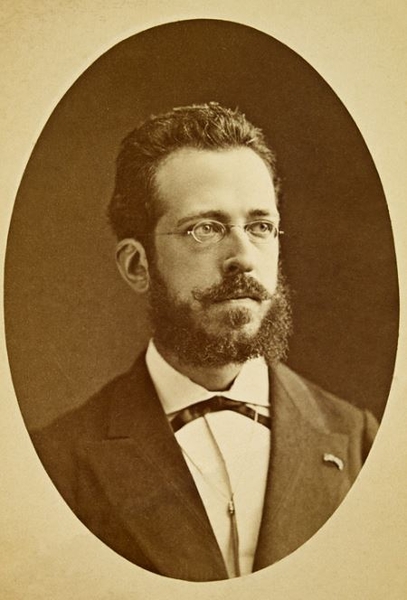
- Home
- Portrait gallery
- CTG correspondents
- Émile Cartailhac (1845-1921)
In the 1890s, Toulouse-born Émile Cartailhac was tasked with completing the Dictionnaire archéologique.
© MAN, Valorie Gô
A great promoter of prehistory in France, from 1870, Émile Cartailhac was a non-resident member of the CTHS and a correspondent of the Commission de Topographie des Gaules. In the 1890s, he was given responsibility for the completion of the Dictionnaire archéologique de la Gaule.
A young archaeologist at the heart of the prehistory community
As a young boy, Cartailhac was introduced to prehistory by his uncle, Armand de Quatrefages, professor at the Muséum national d'Histoire naturelle in Paris. In his free time, he took part in excavations of dolmens in Aveyron. In 1867, alongside Gabriel de Mortillet and Édouard Lartet, he participated in the presentation of prehistoric collections at the universal exhibition. That same year, he was appointed deputy secretary of the Congrès international d’anthropologie et d’archéologie préhistorique. In 1866, he became a member of the Société archéologique du Midi de la France, before becoming its president from 1914 to 1921. In 1869, Cartailhac acquired the review Matériaux pour l’étude philosophique et positive de l’Homme, founded by Gabriel de Mortillet, which he merged, in 1889, with the Revue d’anthropologie and the Revue d’ethnographie, and became co-editor of L’Anthropologie. The final volume of the Dictionnaire archéologique de la Gaule, which he had taken on in 1894, was finally published in 1924, three years after his death.
Close to Abbé Breuil and keen to share his knowledge
In the 1880s, he carried out studies of megaliths: in Portugal and Spain in 1886 and the Balearic Islands and Sardinia in 1888. Having previously denied the authenticity of cave paintings in Altamira, he publicly recognised his mistake in 1902 and went on to publish La Caverne d’Altamira with Abbé Breuil. These two prehistorians continued their collaboration with the exploration of the caves at Niaux (1906) and Gargas (1910). The Prince of Monaco funded excavations led by the two men at the caves of Grimaldi, and in 1910, based on their advice, founded the Institut de Paléontologie humaine. Anxious to share his knowledge of prehistory, Émile Cartailhac created new displays at the musée de Saint-Raymond in Toulouse and also gave his findings to the musée de Toulouse and the musée de Saint-Germain. In 1882, he led the first course in prehistoric history at the science faculty in Toulouse.

